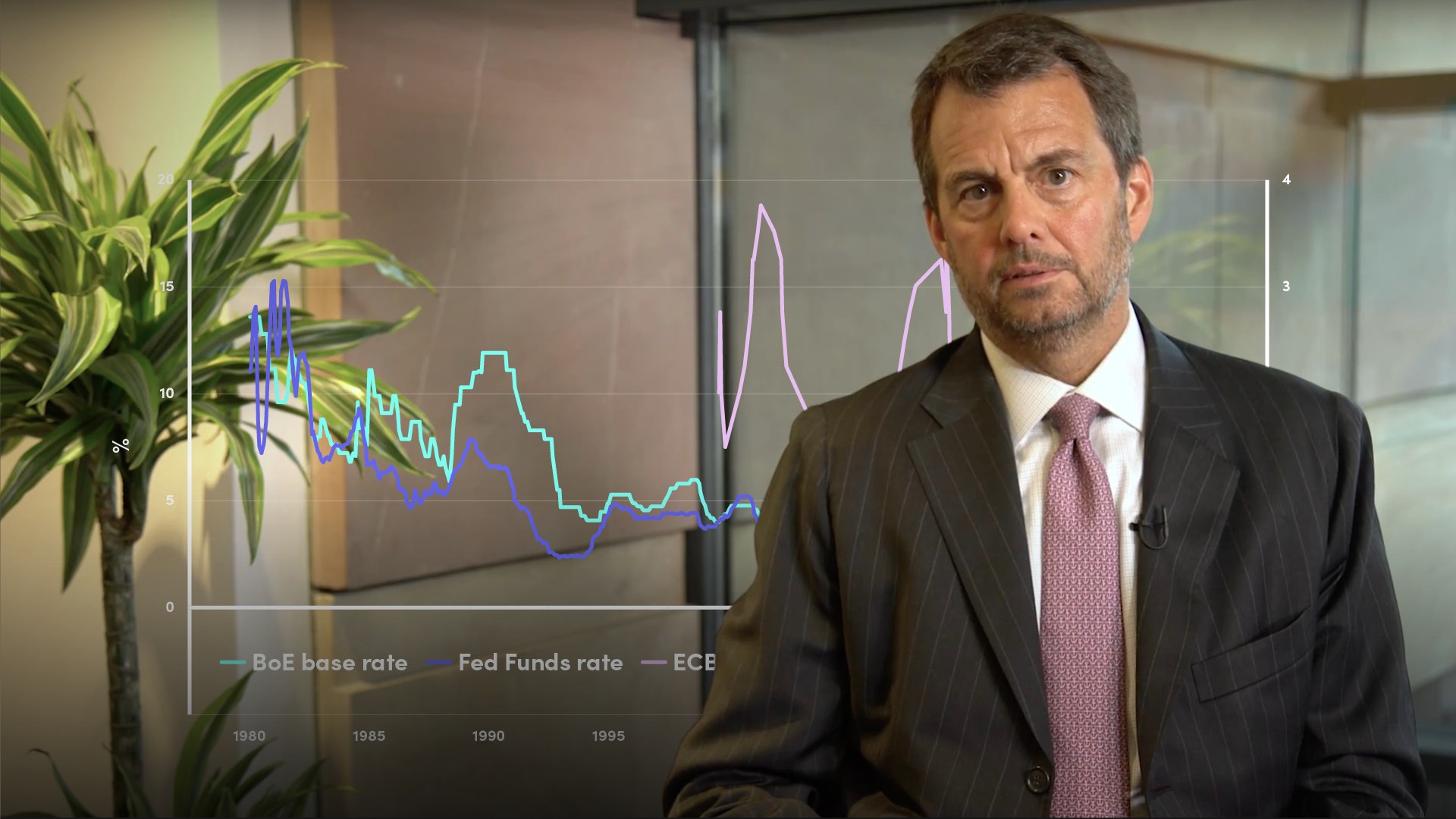
Deflation and the Emergence of Quantitative Easing

Tim Hall
30 years: Debt capital markets
In the last video on this series, Tim highlights the impact of QE as a unconventional monetary policy tool and stresses the importance of a coordinated policy response when dealing with difficult economic conditions.
In the last video on this series, Tim highlights the impact of QE as a unconventional monetary policy tool and stresses the importance of a coordinated policy response when dealing with difficult economic conditions.
Subscribe to watch
Access this and all of the content on our platform by signing up for a 7-day free trial.

Deflation and the Emergence of Quantitative Easing
14 mins 1 sec
Key learning objectives:
Understand how QE works and its effects
Identify the importance of the coordination of policy tools
Describe a modern monetary theory
Overview:
A central bank has a variety of tools, both conventional and unconventional, that it can use to stimulate economic growth or slow an overheated economy so as to meet its objectives. Monetary policy must be carefully coordinated with fiscal and regulatory policy to realise its maximum potency.
Subscribe to watch
Access this and all of the content on our platform by signing up for a 7-day free trial.
If the overnight deposit rate loses its influence, what other policy tool can the central bank use?
- Whilst central banks have influence on interest rate levels at the short end of the yield curve as they set the overnight deposit rate, the rest of the yield curve is determined by supply and demand in the domestic bond market (market forces) - the overnight deposit rate loses its influence when it approaches 0% “zero bound”.
- The central banks will influence rates at the long end of the yield curve by creating money used to make open market purchases of intermediate and longer term bonds. These are generally government securities, driving down yields and flattening the yield curve. The ultimate objective of this policy tool is to stimulate long term borrowing for investment and consumption in the hopes of reviving the economy.
What is Deflation?
This means that consumers become accustomed to prices falling, so they tend to defer purchases until the future, when prices are expected to be lower. As a result, spending is deferred which negatively affects economic growth.How does Quantitative Easing work?
The central bank generally announces its intentions for a QE operation well in advance, including:
- Amount
- Time frame
- Securities targeted
The money to undertake the purchases associated with QE is printed by the central bank, so QE is clearly an expansionary policy.
What is the effect of QE?
The announcement of QE itself is a signal and has the effect of boosting intermediate and longer-term government bond prices, conversely lowering their yields and flattening the yield curve. The intent is for the central bank to use its unlimited money-printing capability to lower long term interest rates, and by doing so, to stimulate consumer and business borrowing.What does the effect of printing money have on central banks’ balance sheets?
Central banks engaging in QE to buy assets in the market, significantly increases their balance sheets. For example:
- The Federal Reserve engaged in three rounds of QE between 2008-2014, increasing its balance sheet from $800bn in 2007 to $4.5tn by 2014
- The Bank of Japan has the largest balance sheet as a percentage of the country’s GDP - at around 100%
- The ECB is around 40% assets to GDP following three years of quantitative easing
- The Bank of England is around 30% assets to GDP following three phases of QE, the last of which started in 2016 following the Brexit referendum
How can QE be unwound?
No-one really knows how QE can be unwound. This is because unwinding QE - known as quantitative tightening - has not fully been tested. Only the US has engaged in a period of QT, reducing its balance sheet from $4.5tn to $4tn during 2018, however this was abandoned as fear of a recession loomed. Quantitative tightening reduces the money supply, and hence, is a restrictive monetary policy. Although this method is yet to be widely used, it is clear that it must occur gradually, and only during periods of strong economic growth. The actual reduction of assets could take many years, perhaps even decades.What are the negative effects of quantitative easing?
- Contributing to income inequality
- Less wealthy people have lacked sufficient net worth to benefit from the strong performance of equity markets, unlike the wealthier beneficiaries - they have simultaneously suffered from stagnant or low wage growth during that same period
- In some cases, it has not spurred corporate growth
- It has caused companies with underfunded defined benefit pension schemes to have to direct greater amounts of free cash flow to plug the funding gap caused by unexpectedly low returns
Why is the coordination of policy tools important?
During periods of economic stress, accommodative monetary policy must be carefully coordinated with accommodative fiscal policy and proactive bank reform to be successful. When these policy tools are pulling in the same direction, an unprecedented economic downturn can be broken, and economic growth restored. However, when they are not carefully coordinated, the result can be long periods of stagnation and deflation, which can become entrenched in an ugly downward cycle, difficult to reverse.What is modern monetary theory?
Modern monetary theory (MMT) is the philosophy that countries which print their own currencies should not worry about deficits, or about servicing their debt, since they can print all the money necessary to avoid a default. The theory suggests that money should be created, without constraint and as necessary, to ensure there is always full employment and to fund all government expenditures, i.e. “healthcare-for-all”. In essence, the management of the economy would become more fiscal, or government run.What are the concerns over MMT?
Concerns over the base assumptions:
- The size of the government deficit does not matter
- Printing money rather indiscriminately is not inflationary
Subscribe to watch
Access this and all of the content on our platform by signing up for a 7-day free trial.

Tim Hall
There are no available Videos from "Tim Hall"



























